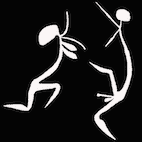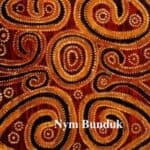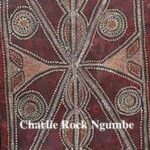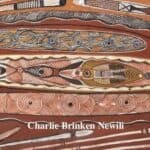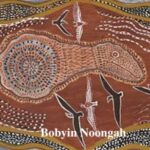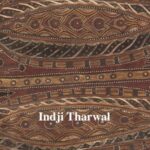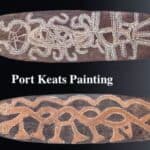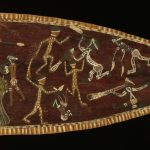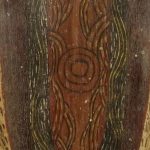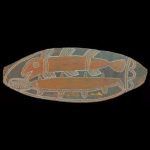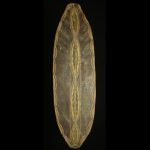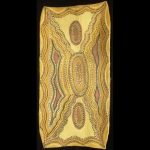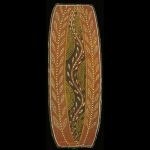Port Keats painting
Port Keats Bark Painting: History, Style, and Collectibility
Port Keats bark paintings, often created on oval-shaped or square bark panels with rounded corners, represent a unique and culturally rich style of Aboriginal bark art. The most collectible and historically significant examples are the early works from the late 1950s and early 1960s, which feature churinga-like designs—symbolic, abstract forms linked to ceremonial knowledge and ancestral Dreamings.
The tradition of bark painting in Port Keats (now Wadeye) began in earnest around 1958, when renowned rock art researcher George Chaloupka commissioned and collected 64 bark paintings from local artists. This marked a significant turning point in the region’s art history, shifting some ceremonial designs—previously carved into sacred wooden boards—into painted form, likely influenced by European interest in Indigenous art.
Before this time, Port Keats Aboriginal artists were known to paint on stone surfaces and weapons, but painting on bark was not a longstanding cultural practice. Instead, it is widely believed that the medium of bark was adopted to meet growing demand from European collectors and institutions.
The Australian poet and collector Roland Robinson, known for his book Mythologies, is also credited with encouraging the commercial development of Port Keats Aboriginal painting, helping to bring this distinct regional style to broader public attention.
By the early 1960s, the Catholic Mission at Port Keats played a significant role in supporting local artists. Bark paintings were purchased at the mission store, creating a small-scale, mission-managed cottage industry that provided both income and visibility for the artists. However, because these artworks remained largely on bark—rather than canvas or board—they were often categorized as ethnographic rather than contemporary Aboriginal art.
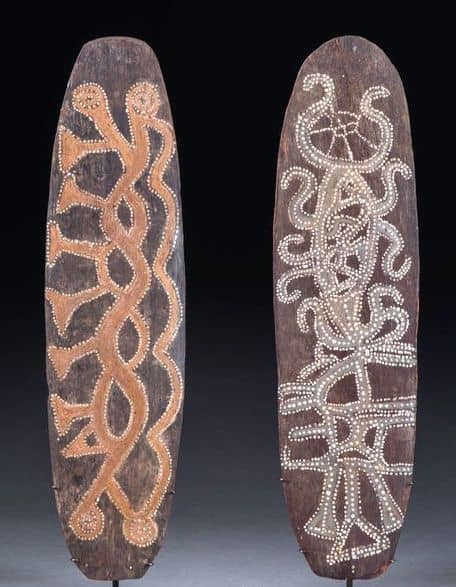
If you own or have discovered a Port Keats bark painting, I’d be very interested in seeing it. Please send a clear image along with its dimensions. I’m happy to provide insight into its origins and potential value. If the work appears to be from the early period, I may also be interested in acquiring it for historical research and preservation.
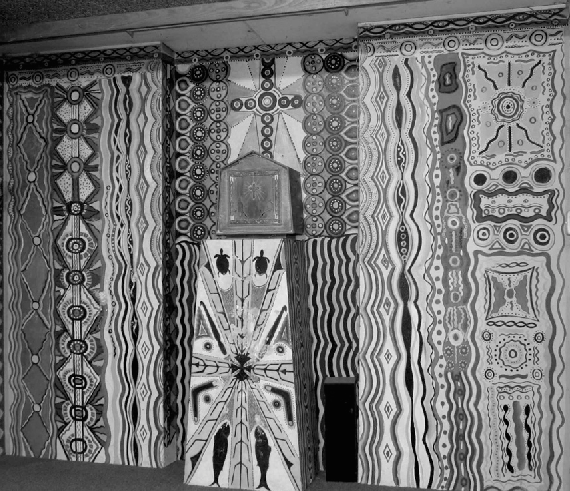
Port Keats Catholic mission Altar Panels
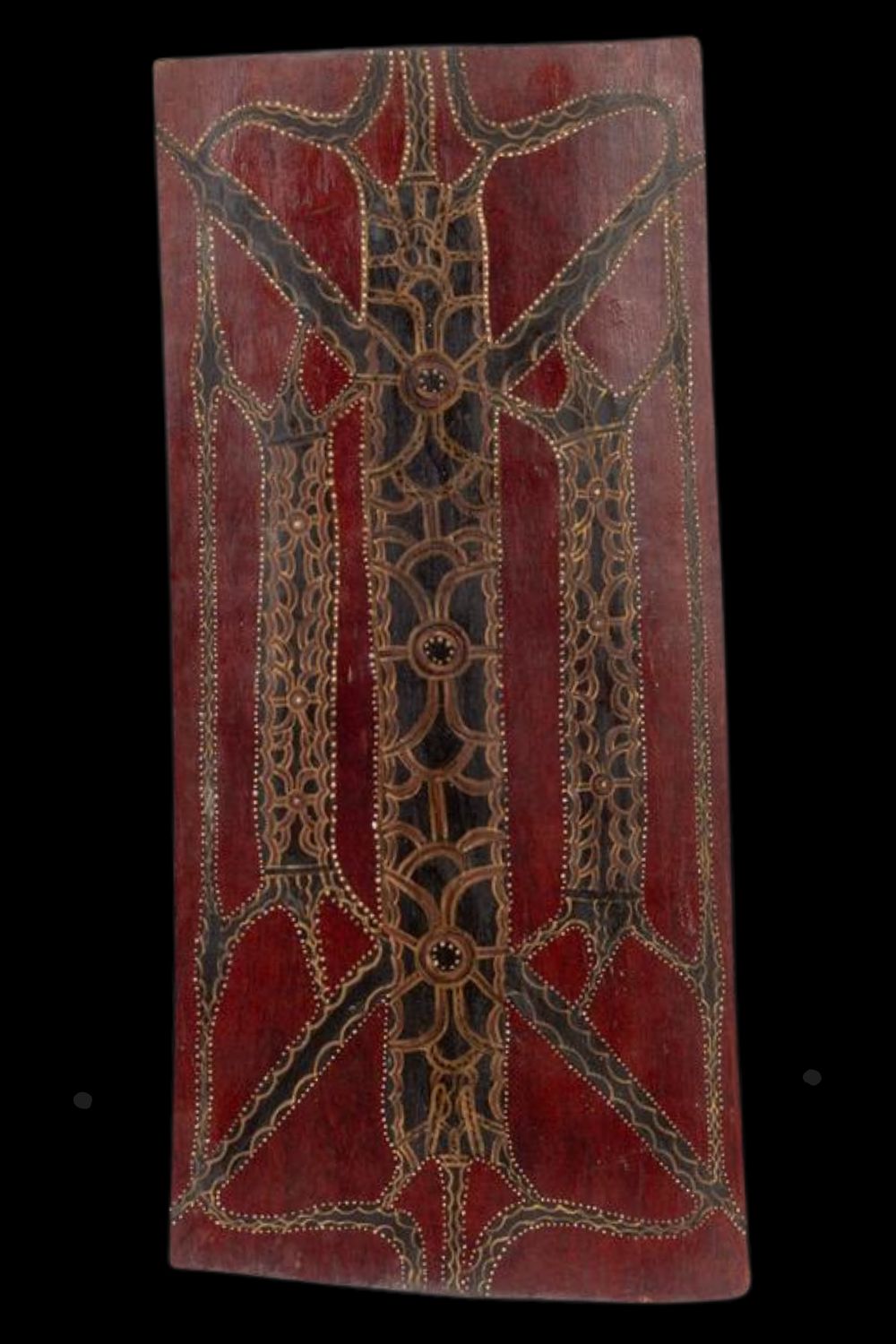

Port Keats Painting Style: From Churinga Designs to European Imagery
The Port Keats painting style, originating in the 1960s, represents a unique and historically significant chapter in the evolution of Aboriginal bark painting. Early works from this region featured churinga-style designs—geometric, abstract motifs rich in cultural and ceremonial meaning. These designs often included concentric circles, parallel journey lines, and sacred patterns closely related to the iconography found in Western Desert Aboriginal art.
This early phase, deeply rooted in traditional Dreaming, gradually gave way to works that incorporated more European imagery. While these later bark paintings still depict ceremonial figures, totemic animals, and ancestral beings, their visual style shifted away from the sacred abstraction of earlier designs. Although meaningful, these later works often lack the symbolic depth and spiritual ambiguity that defines early Port Keats Aboriginal art.
One key difference between Port Keats and other regions—particularly Central Australia—is how sacred symbols were treated. In the Western Desert, cultural protocols led to the transformation of sacred designs through dotting techniques, giving rise to the internationally celebrated Aboriginal dot painting movement. In contrast, artists from Port Keats distanced themselves from sacred symbolism altogether, adopting more figurative and European-influenced forms.
Another significant factor in the decline of the Port Keats painting movement was the limitation of medium. Unlike their Central Australian counterparts, Port Keats artists primarily painted on bark. The absence of canvas or board as a medium restricted both the durability and market appeal of their work. In the art world, bark paintings have often been categorized as ethnographic objects, while paintings on canvas or board are more readily embraced as contemporary Aboriginal fine art.
As a result, the Port Keats painting style—despite its cultural depth and historical importance—has not received the same recognition as Western Desert art. This divergence is less about artistic quality and more about how materials, iconography, and cultural protection shaped each movement’s legacy.
If you are a collector, researcher, or community member with knowledge of early Port Keats Aboriginal artists, I invite you to reach out. Documenting their stories can help restore recognition to these underappreciated artists and preserve the integrity of this unique art tradition.
Unattributed Bark Paintings from Port Keats: Historical Significance and Lost Stories
Many early Aboriginal bark paintings, particularly those collected from the Port Keats region (now Wadeye), lack recorded artist names. Despite this anonymity, these traditional Aboriginal artworks retain considerable cultural and aesthetic value. In some cases, it is possible to attribute a painting to a specific artist based on stylistic elements, clan motifs, or oral history passed down through community knowledge.
Unfortunately, documentation of Port Keats artists was minimal during the early periods of collection. There was no consistent effort by collectors, galleries, or dealers to photograph the artists or record the rich Dreaming stories and cultural meanings embedded in the bark paintings. As a result, these remarkable artworks—many created decades before the rise of the Western Desert painting movement—have been historically undervalued in the broader Aboriginal art market.
This lack of provenance has limited the recognition and monetary value of Port Keats bark paintings, despite their historical and artistic significance. It represents a critical oversight in the early collection and archiving of Indigenous Australian art.
If you have any information, photographs, or oral histories about the artists behind these early Port Keats works, please get in touch. Your knowledge could help illuminate the lives and legacies of these important Aboriginal artists, allowing their stories to be more fully shared and appreciated.
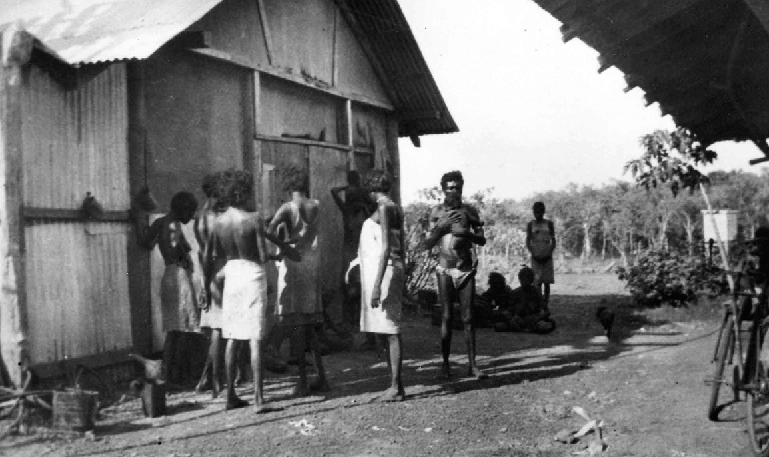
Mission Store Port Keat 1970s
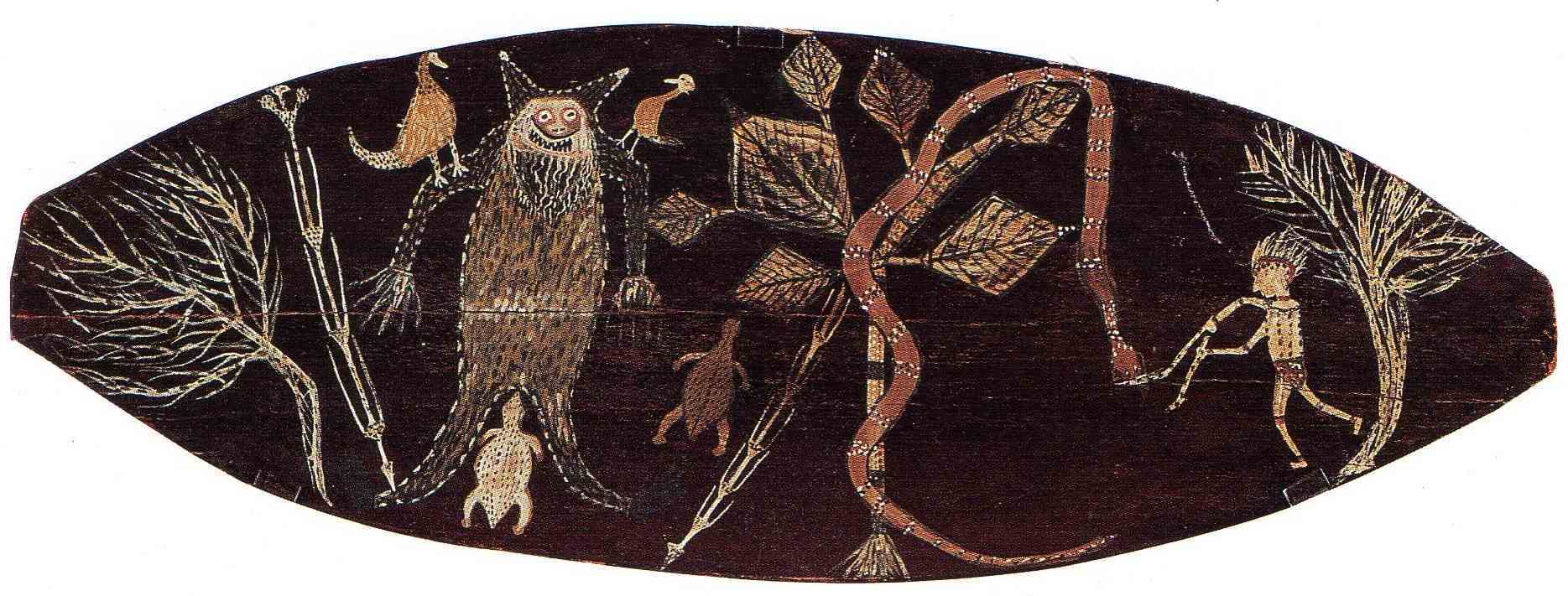
Port Keats bark painting Artists
Charlie Mardigan (1926 -1986)
Charlie Mardigan was the most prolific and I believe the best of the Port Keats painting Artists. Some of his better works I believe rival those of the early Papunya Artists and rely strongly on traditional design elements.
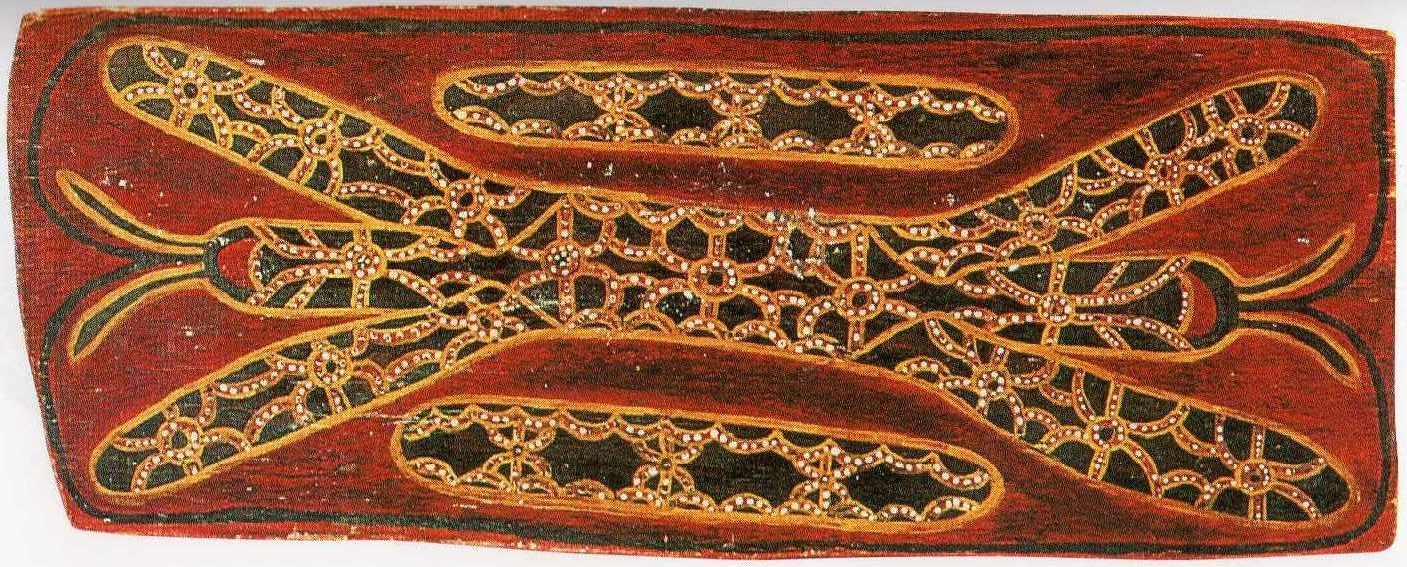
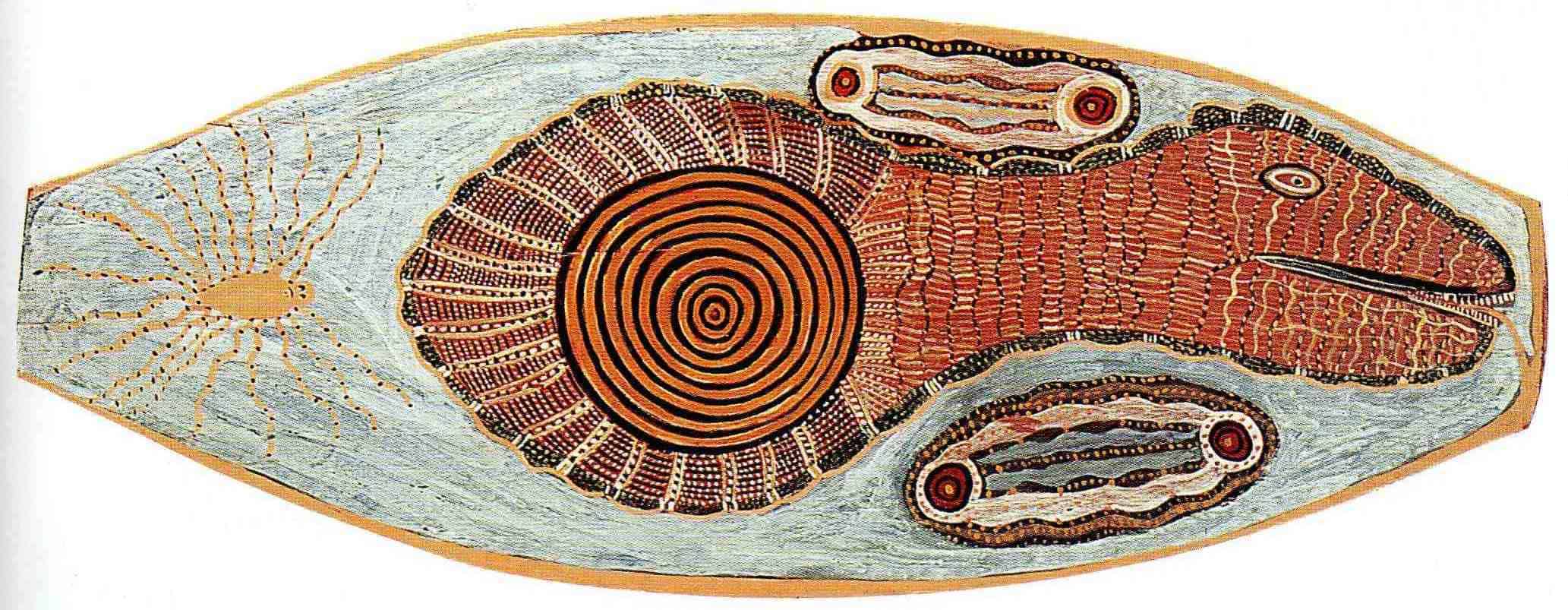
Bobyin Nongah was an aboriginal artist working in Wadeye (Port Keats) in the 1960s and 1970s. His main dreaming and subject of most of his paintings is the rainbow serpent or Kunmanggur.
Nym Bunduk
Indigenous Australian Artist Nym Bunduk is one of the few known painters of the Port Keats area. His early paintings are mainly of churinga-style designs painted on oval pieces of bark.
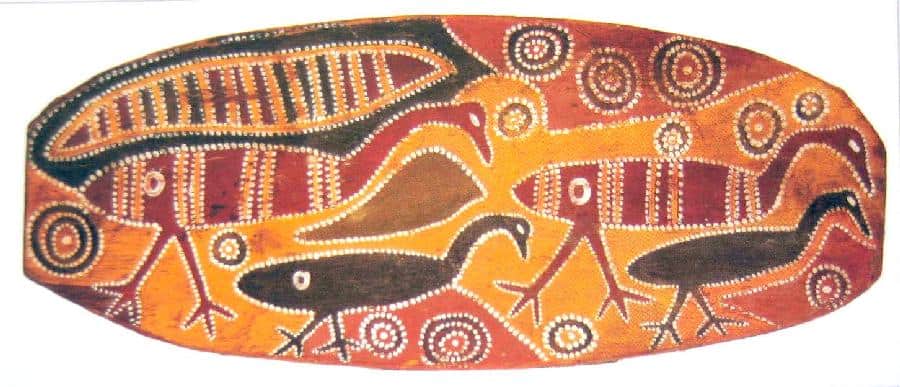
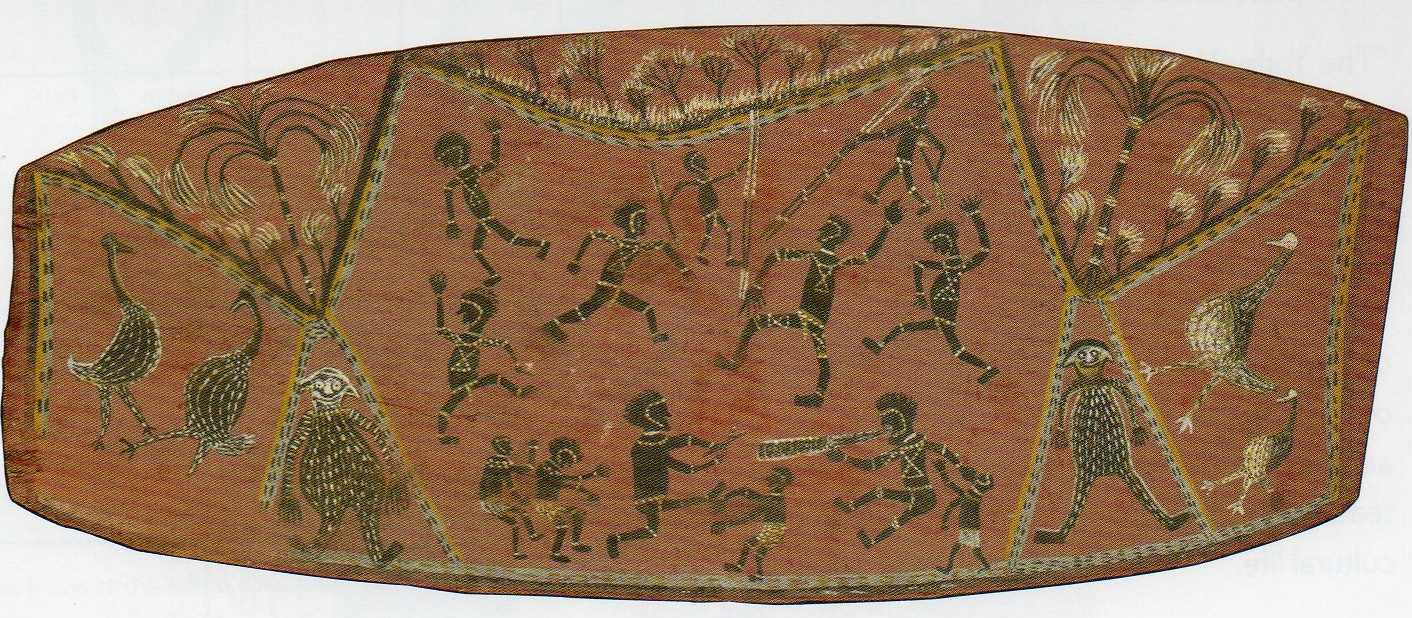
Charlie Brinken
Charlie Brinken (Newili) is an aboriginal artist from Wadeye (Port Keats) who painted in the 1960s and 1970s. He is best know for his bark paintings of churinga-like designs and ceremonial scenes.
Charlie Rock Ngumbe
There is virtually no information available on this artist. Charlie Rock Ngumbe spoke Murrinh – Patha language and was born around 1910.
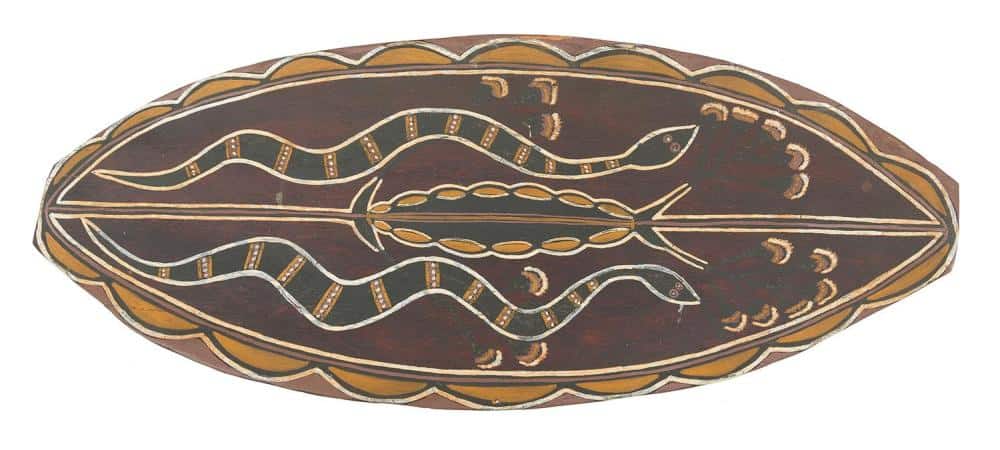
Further reading
Other Port Keats Art and Artists
All images in this article are for educational purposes only.
This site may contain copyrighted material the use of which was not specified by the copyright owner.
